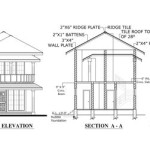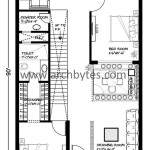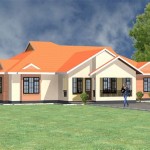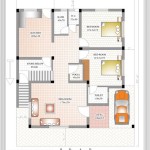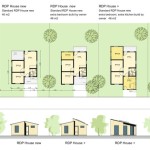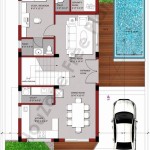Virtual House Plans: A Comprehensive Guide
Virtual house plans, also known as online house plans or digital house plans, represent a significant advancement in residential design and construction. They offer a convenient and efficient way to browse, customize, and purchase architectural drawings for building a new home or renovating an existing one.
Traditional blueprints, while still relevant, involve handling large paper sheets, which can be cumbersome and prone to damage. Virtual house plans address these limitations by providing digital files that can be easily stored, shared, and modified. These files are typically available in formats like PDF, DWG, and CAD, allowing for compatibility with various software applications used by architects, builders, and homeowners.
One of the primary advantages of virtual house plans is the vast selection available online. Numerous websites host extensive catalogs featuring a diverse range of architectural styles, sizes, and functionalities. This allows prospective homeowners to explore various design options and find a plan that best suits their needs and preferences, often without geographical limitations.
Cost-effectiveness is another key benefit. Virtual house plans are often significantly more affordable than commissioning custom designs from an architect. This is because the initial design work has already been completed, and the plans are readily available for purchase and download. This can represent significant savings, particularly for budget-conscious individuals or families.
Customization options vary depending on the provider and the specific plan chosen. Some platforms offer basic modification tools that allow users to adjust room dimensions, window placements, and other features. Others provide access to professional designers who can assist with more complex alterations, ensuring the final plan aligns perfectly with the homeowner's vision.
The process of acquiring virtual house plans is typically straightforward. Users can browse online catalogs, filter by criteria such as square footage, number of bedrooms, and architectural style, and select a plan that meets their requirements. Once a plan is chosen, the user can purchase and download the digital files. It is crucial to verify the licensing agreement associated with the chosen plan, as some plans may have restrictions on modifications or the number of builds permitted.
Before purchasing virtual house plans, it is essential to consider local building codes and regulations. While many plans are designed to comply with general building standards, specific requirements may vary depending on the location. Consulting with local authorities or a qualified builder can help ensure the chosen plan adheres to all applicable regulations and avoids potential complications during the construction process.
Working with a qualified builder is highly recommended when using virtual house plans. Builders possess the expertise to interpret the technical aspects of the plans, manage the construction process effectively, and address any unforeseen challenges that may arise. They can also provide valuable insights and guidance on material selection, cost estimation, and project timelines.
The use of virtual house plans has significantly impacted the residential construction industry. The accessibility and affordability of these plans have democratized the design process, empowering homeowners to take a more active role in shaping their dream homes. The efficiency and convenience they offer also contribute to streamlining the construction process, potentially reducing project timelines and overall costs.
The evolution of technology continues to enhance the capabilities of virtual house plans. 3D modeling and virtual reality technologies are increasingly integrated into online platforms, providing immersive experiences that allow users to visualize their future homes in greater detail. These advancements further simplify the design process and enhance communication between homeowners, architects, and builders.
While virtual house plans offer numerous advantages, it is important to acknowledge potential limitations. The absence of direct interaction with an architect during the initial design phase might be a drawback for some individuals who prefer a more personalized and collaborative approach. Thoroughly researching and selecting a reputable provider is crucial to ensure the quality and accuracy of the chosen plan.
Furthermore, adapting a pre-designed plan to a specific site may require modifications, particularly concerning topography, soil conditions, and orientation. Consulting with a qualified builder or land surveyor can help assess the site's suitability and identify any necessary adjustments to the chosen plan.
The increasing popularity of virtual house plans reflects a broader trend towards digitalization in the construction industry. As technology continues to evolve, virtual house plans are likely to become even more sophisticated and integrated into the design and construction process, offering greater efficiency, affordability, and accessibility for homeowners and professionals alike.
Choosing the right virtual house plan requires careful consideration of various factors, including budget, lifestyle, and local regulations. Thorough research, consultation with professionals, and a clear understanding of the project's requirements are essential for a successful outcome.

Virtual Floor Plan Land8

How Much Do 3d House Plans Cost Faqs Answered Cedreo

3d Floor Plans

Virtually Staged Floor Plans 5 Ways To Use Them For Real Estate Listings

Virtually Staged Floor Plans Vs 2d Drawings What To Choose

How Much Do 3d House Plans Cost Faqs Answered Cedreo

3d Floor Plans

Virtual House Plan Tours Sater Design Collection

What Is 3d Floor Plan How To Make It Benefits Cost

3d Floor Plans Easily Communicate Your Vision Cedreo



